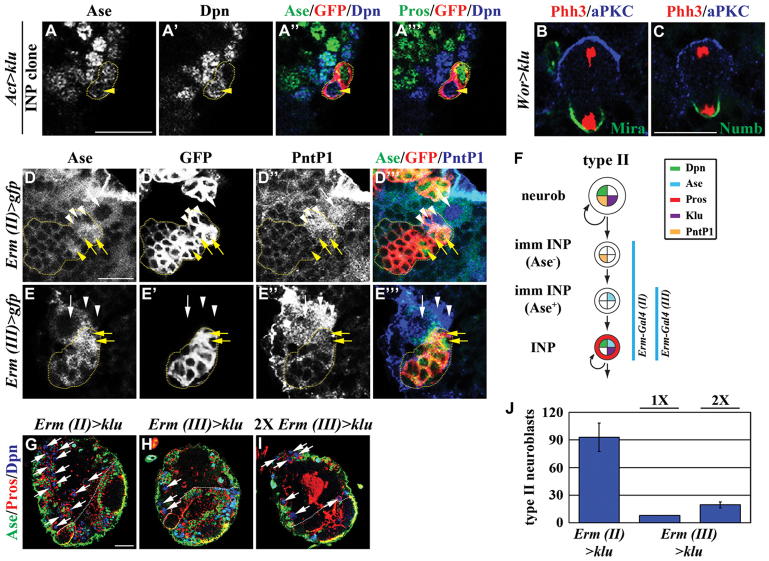Fig. 3.
Misexpression of klu triggers the reversion of immature INPs to type II neuroblasts. (A-A‴) Overexpression of klu is not sufficient to trigger de-differentiation of INPs. Drosophila larvae carrying GFP-marked INP lineage clones (outlined by the yellow dotted line) overexpressing klu were aged for 24 hours after clone induction and brains were stained for the markers indicated. (B,C) Telophase neuroblasts overexpressing klu show asymmetric localization of apical and basal proteins. Phh3, phosphorylated histone H3. (D-F) The activity of erm-GAL4 is first detected in immature INPs. (D-E‴) Larvae expressing GFP driven by erm-GAL4 (II) or erm-GAL4 (III) were aged for 72 hours and brains were stained for the markers indicated. PointedP1 (PntP1) marks type II neuroblasts and Ase− immature INPs. (F) Summary of the erm-GAL4 expression pattern in the type II neuroblast lineage. (G-J) Overexpression of klu in immature INPs leads to supernumerary type II neuroblasts. (G-I) Larvae overexpressing klu driven by erm-GAL4 were raised at 31°C for 72 hours ALH and brains were stained for the markers indicated. The white dotted line separates the central brain (left) from the optic lobe (right). (J) Average type II neuroblasts per brain lobe in larvae of the genotype indicated. 1×, 2× indicate the copy number of UAS-klu and erm-GAL4 (III) transgenes. Error bars indicate s.e.m. Abbreviations and arrows/arrowheads as Fig. 1. Scale bars: 10 μm in A-A‴,D-E‴; 5 μm in B,C; 20 μm in G-I.

